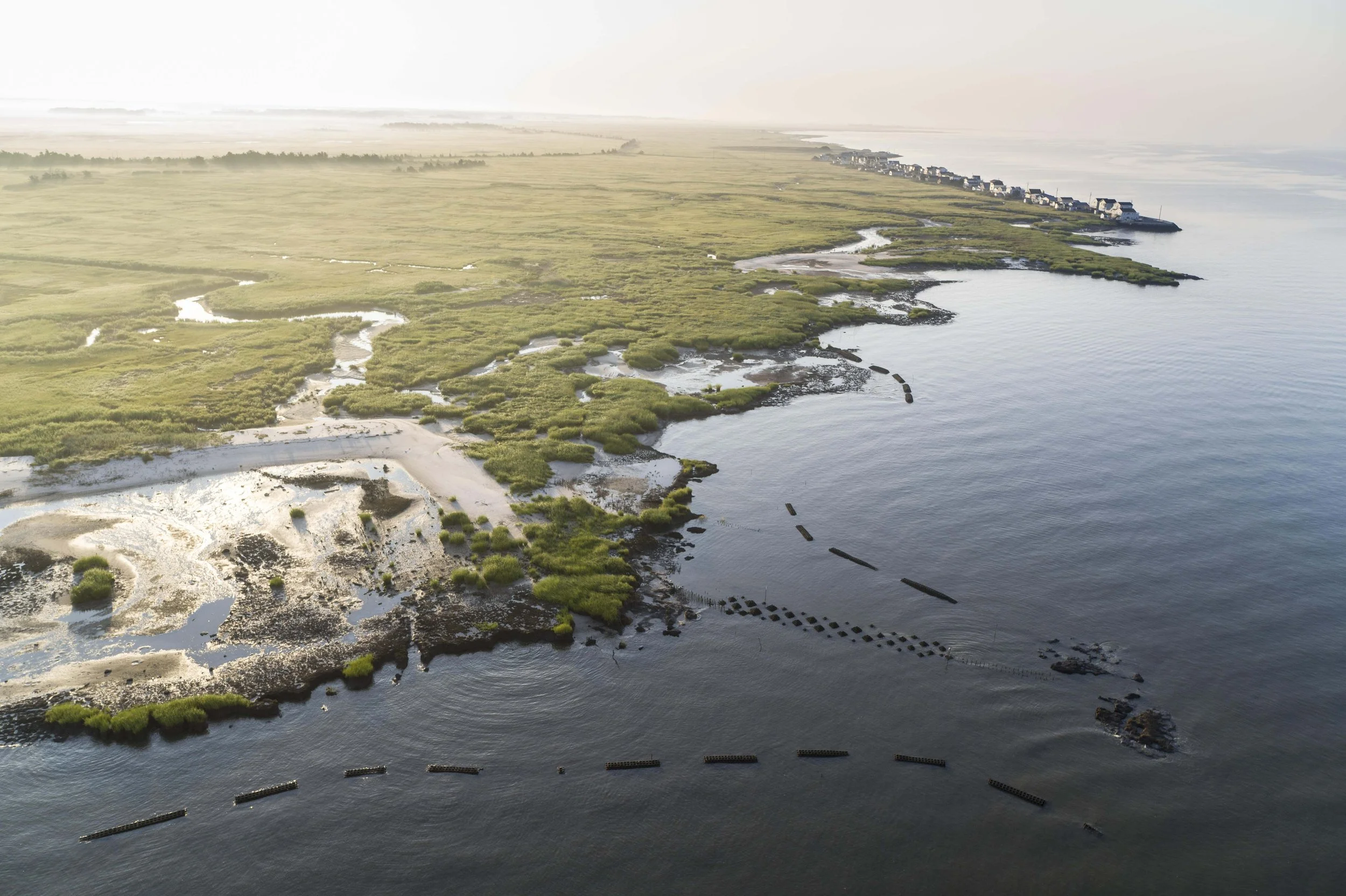Presenters:
Danielle McCulloch, Coastal Program Biologist at the U.S. Fish and Wildlife Service Delaware Bay Coastal Program
Topic: Lessons Learned and Applicability of Gandy’s Beach Monitoring for Policy and Future Implementation of Nature-Based Solutions
Adrianna Zito-Livingston, Coastal Projects Coordinator at The Nature Conservancy New Jersey Chapter
Topic: Planning and Monitoring a Pilot Living Shoreline: Setting up 7 Years of Learning
Presentation Details: Gandy’s Beach in Delaware Bay epitomizes the dynamic energetics, miles of fetch, winter ice, and rapid erosion rates that make shoreline protection a challenge in the Mid-Atlantic. Hurricane Sandy appropriations funded construction of nature-based solutions to protect this degraded horseshoe crab spawning and shorebird foraging habitat and provided an opportunity to learn from nature-based solutions. The Nature Conservancy and U.S. Fish and Wildlife Service constructed shell bag reefs and oyster castles along nearly 3,000 linear feet of shoreline in 2016. Since construction, Stevens Institute of Technology, Partnership for the Delaware Bay Estuary, and Rutgers University have collected data on wave attenuation of structures, elevation changes, vegetation response, erosion, oyster recruitment and survival, horseshoe crab impingement, and fish community. This large partnership and long-term monitoring effort have shifted local policy, informed other nature-based shoreline protection projects, and advanced coastal resilience in the area. The webinar will summarize the preliminary results from the monitoring partners on the project, discuss iterations of adaptive management, summarize lessons learned, and provide guidance on the applicability of this work for future nature-based shoreline protection projects in the Mid-Atlantic. Additionally, the monitoring at Gandy’s has demonstrated a standardized method for collecting interdisciplinary data on novel nature-based coastal restoration projects to replicate for future projects, to help overcome regulatory hurdles and inform coastal habitat restoration practitioners.


